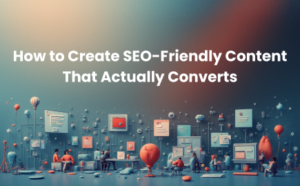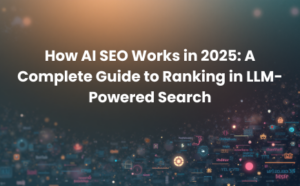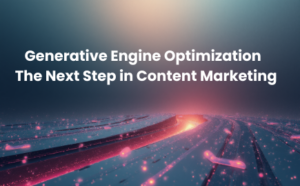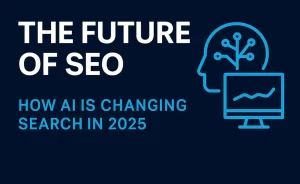Content marketing is evolving. The rise of artificial intelligence (AI), large language models (LLMs), and generative search technologies is reshaping how businesses create, distribute, and optimize content. While traditional SEO remains important, the future of digital marketing is moving toward Generative Engine Optimization (GEO)—an advanced strategy designed to make your content readable, understandable, and highly visible to AI systems.
In this article, we explore GEO, its importance in modern content marketing, key trends, practical strategies, and how digital marketers can leverage it to stay ahead of the competition in 2025.
Table of Contents
- Understanding Generative Engine Optimization (GEO)
- From Traditional SEO to GEO: What’s Changing
- Why GEO Matters in the AI Era
- Key Trends in GEO and Content Marketing
- Practical Strategies to Optimize Content for GEO
- Structured Data & Schema Markup for AI Readability
- Long-Tail Conversational Keywords and Natural Language Queries
- Multimodal Search & Voice Search Optimization
- E-E-A-T for Content: Building Authority and Trust
- Measuring GEO Success: New Metrics & KPIs
- Challenges & Ethical Considerations
The Future of Content Marketing with GEO
1. Understanding Generative Engine Optimization (GEO)
Generative Engine Optimization (GEO) is the process of optimizing content so that AI agents, generative search engines, and chatbots can understand, summarize, and cite it effectively. Unlike traditional SEO, which focuses primarily on rankings and backlinks, GEO prioritizes AI readability, structured content, and authority signals.
GEO ensures that your content is not just discoverable but also AI-visible, meaning it can be cited in Search Generative Experience (SGE) results, AI Overviews, and other zero-click search scenarios.
In essence, GEO is the next evolution of content marketing—one that aligns with AI-driven discovery and conversational search trends
2. From Traditional SEO to GEO: What’s Changing
Traditional SEO strategies were built around:
- Keyword matching
- Meta tags and on-page optimization
- Backlink building
- Technical SEO (site speed, mobile-friendliness, crawlability)
In 2025, these tactics are still important but insufficient on their own. Modern search engines like Google’s Search Generative Experience (SGE), Bing Copilot, and AI-powered assistants prioritize:
- Understanding user intent over exact keywords
- Evaluating semantic relevance and context
- Providing concise, direct answers
- Recognizing structured content and authoritative sources
Generative Engine Optimization (GEO) fills this gap by optimizing content not just for human readers, but for AI agents that drive the next generation of search experiences.
3. Why GEO Matters in the AI Era
The shift toward AI-driven search has introduced several key phenomena:
- AI Overviews: Summarized answers at the top of search results, often reducing clicks but increasing visibility.
- Zero-click searches: Users find answers without visiting a website.
- SERP-less discovery: AI agents deliver information directly through chat interfaces or voice assistants.
For content marketers, this means visibility is as important as ranking. GEO ensures your content is AI-readable and citation-worthy, increasing the likelihood that it will be featured in AI Overviews, SGE panels, and generative search answers.
Without GEO, even well-ranked pages may be invisible in the AI-driven discovery process.
4. Key Trends in GEO and Content Marketing
Several trends are shaping GEO in 2025:
Trend | Impact on Content Marketing |
Search Generative Experience (SGE) | Content must be concise, structured, and authoritative to appear in AI summaries. |
Long-tail conversational keywords | Voice and chat-based queries dominate. Marketers must write in natural language. |
Multimodal search | AI systems analyze text, images, video, and audio together, requiring diverse content formats. |
Answer Engine Optimization (AEO) | Focused on delivering direct answers that AI can extract and present. |
Structured data & schema markup | Essential for AI readability and GEO; helps search engines interpret content efficiently. |
E-E-A-T for content | Expertise, Experience, Authority, and Trustworthiness remain crucial for AI citations. |
These trends highlight that modern content marketing is not just about ranking—it’s about being AI-visible, understandable, and credible.
5. Practical Strategies to Optimize Content for GEO
A. Structure Content for AI Readability
- Use headings (H2, H3) with question-based phrases.
- Start sections with concise summaries.
- Break content into bullet points, tables, and numbered lists.
- Include FAQs using schema markup to enhance AEO performance.
B. Focus on Long-Tail Conversational Keywords
- Identify natural language queries your audience asks.
- Write content in a conversational tone suitable for voice search and AI chatbots.
- Examples: “How does GEO impact content marketing in 2025?”, “What are the best AI SEO strategies for businesses?”
C. Enhance E-E-A-T for Content
- Include author credentials and professional bios.
- Provide real-life examples, case studies, and verified data.
- Cite trusted sources and research to improve AI trust signals.
D. Optimize for Multimodal Search
- Add high-quality images with alt text.
- Include video content with transcripts and captions.
- Use structured data for VideoObject and ImageObject.
E. Implement Structured Data & Schema Markup
- Use FAQ, Q&A, Article, and HowTo schemas.
- Make your content AI-readable, increasing chances of citation in AI Overviews and SGE panels.
- Test schema using Google’s Rich Results Test.
6. Structured Data & Schema Markup for AI Readability
Structured data is the backbone of Generative Engine Optimization. By marking up content correctly, you signal to AI agents:
- What the content is about
- Which sections answer specific questions
- Which multimedia elements are relevant
For example:
{
“@context”: “https://schema.org”,
“@type”: “FAQPage”,
“mainEntity”: [{
“@type”: “Question”,
“name”: “What is Generative Engine Optimization (GEO)?”,
“acceptedAnswer”: {
“@type”: “Answer”,
“text”: “GEO is the process of optimizing content to be readable and cited by AI systems and generative search engines.”
}
}]
}
This ensures that AI agents can extract and present answers directly, boosting visibility even in SERP-less discovery scenarios.
7. Long-Tail Conversational Keywords & Natural Language Queries
The rise of AI assistants and voice search means keyword matching alone is insufficient. Users now ask questions in full sentences:
- “How can GEO improve content marketing in 2025?”
- “What are the best strategies for AI visibility?”
To optimize:
- Integrate long-tail conversational keywords naturally.
- Create content clusters around related questions and entities.
- Use a conversational, human-first tone that AI can replicate in answers.
This approach also enhances voice search optimization, capturing queries from smart speakers and mobile assistants.
8. Multimodal Search & Voice Search Optimization
AI-driven search now integrates voice, image, video, and text:
- Voice search: Write short, concise answers in conversational language.
- Visual search: Optimize images with descriptive filenames, alt text, and structured data.
- Video content: Include transcripts, captions, and timestamped chapters for AI readability.
Multimodal content ensures your brand can be discovered across multiple touchpoints, not just traditional SERPs.
9. E-E-A-T for Content: Building Authority and Trust
In the age of AI, credibility is non-negotiable. Content with poor trust signals is unlikely to be featured in AI Overviews or SGE panels.
- Include author bios, credentials, and photos.
- Use case studies, testimonials, and real examples.
- Cite reputable sources and provide accurate data.
- Avoid clickbait and unverified content to maintain AI and human trust.
Strong E-E-A-T for content boosts your AI visibility and strengthens your brand reputation in generative search results.
10. Measuring GEO Success: New Metrics & KPIs
Traditional SEO metrics are still relevant, but AI introduces new KPIs:
Traditional Metrics | GEO Metrics |
Organic traffic | Appearances in AI Overviews / SGE panels |
Keyword ranking | Performance for long-tail conversational queries |
Click-through rate (CTR) | AI citations and mentions in generative answers |
Backlinks | Trust signals, external citations, schema validation |
User engagement | Attention mapping, dwell time, scroll depth |
Measuring AI visibility ensures that your content marketing strategy aligns with future search trends rather than just historical ranking patterns.
11. Challenges & Ethical Considerations
While GEO offers incredible opportunities, content marketers must navigate potential risks:
- Plagiarism & non-original content: AI can generate content that isn’t unique. Always fact-check.
- Bias & misinformation: AI agents may inadvertently propagate errors.
- Transparency: Clearly disclose AI-assisted content creation.
- Over-optimization: Gaming AI summaries can backfire; quality always wins.
Ethical GEO practices not only maintain credibility but also safeguard long-term AI visibility.
12. The Future of Content Marketing with GEO
By 2026, we expect Generative Engine Optimization to become a standard for content marketing:
- AI Overviews will power a majority of informational searches.
- Cross-platform optimization will be critical: Google, Microsoft, OpenAI, Anthropic, and more.
- Personalized & predictive search: AI will anticipate user intent and suggest content proactively.
- Integration with AR/VR: Spatial search and immersive content will require GEO optimization.
The key takeaway: success in modern content marketing requires creating AI-readable, structured, and authoritative content. GEO is not just a trend—it’s the future.
Final Thoughts
Generative Engine Optimization (GEO) represents the next frontier in content marketing. By focusing on structured, authoritative, and AI-readable content, marketers can ensure:
- Enhanced AI visibility
- Inclusion in AI Overviews & SGE panels
- Higher engagement through voice, visual, and multimodal search
The future of content marketing isn’t just about attracting clicks—it’s about being understood, cited, and trusted by AI systems. Embrace GEO today, and position your brand for success in 2025 and beyond.





